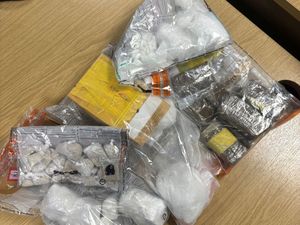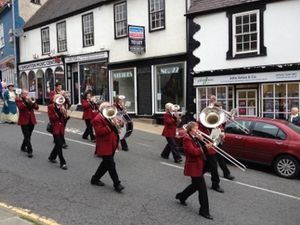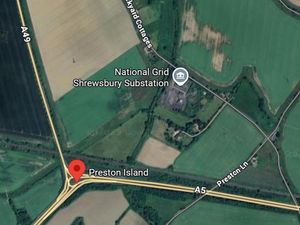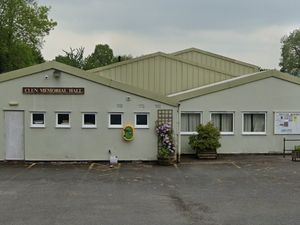The humble beginnings of a movement which transformed the Ironbridge Gorge
The idea of having a museum in the Ironbridge Gorge was not a new one.
Today's Ironbridge Gorge Museum was following in the footsteps of an earlier, but much smaller venture, albeit motivated by the same appreciation for local heritage and desire to ensure it was safeguarded for future generations.
It was in the late 1950s that Allied Ironfounders Ltd embarked on a project which was to uncover buried treasure in Coalbrookdale.
Allied Ironfounders had been formed in 1929 by the merger of a number of foundries, including the historic Coalbrookdale Company, in the grounds of which was that Abraham Darby furnace which is credited with being the cradle of the Industrial Revolution.
Abraham Darby I, a brassmaker who moved to Coalbrookdale to make cooking pots, discovered the coke smelting process in 1709 which led to the great expansion of the iron trade. He was the first of a dynasty of Abraham Darby ironfounders who made their mark both on the area and in laying the foundations for the industrialised world that we know today.
It was that first Abraham Darby's grandson who built the world's first Iron Bridge over the River Severn, the ribs of which may or may not have been cast in his grandfather's old furnace - there is considerable debate among industrial historians about where exactly in the Ironbridge Gorge the bridge ribs were cast.
Some time in 1958 the firm started a project to excavate the Coalbrookdale site and during the months that followed something like 15,000 tons of rubble was removed.
The original furnace was considerably extended during its working life but had, by the 1820s, been blown out.
Over the years the structure was gradually buried under many years of waste material. There was a proposal, apparently in the early 1950s, for the site to be cleared and the furnace dismantled, perhaps with the cast iron beams of the furnace being kept to be preserved elsewhere.
This did not happen, but clearly it was a close run thing. The climate of opinion changed, and as so often in such matters it is individual personalities who made all the difference.
A key personality in the story was Fred Williams, the Coalbrookdale company's managing director and a director of Allied Ironfounders.
According to one account, what sparked it all off was when a bulldozer clearing the area at Coalbrookdale unearthed a refractory brick wall. Fred Williams was certain it was part of Abraham Darby's early furnaces, and was proven correct by further excavations.
Perhaps it was fortuitous also that a significant anniversary for the firm was on the near horizon, giving the spur for a project which would be a fitting celebration and lasting commemoration.
With the exception of the mechanical excavation, all the work on the old furnace site and in preparing a small museum was done by the firm's employees.
Another key personality was Arthur Raistrick, a historian and author who had played a leading role in raising awareness of the industrial history of the area, particularly with his 1953 book "Dynasty of Ironfounders: The Darbys and Coalbrookdale."
He and Williams were to become lifelong friends.
The culmination of the project came on October 15, 1959, when over 230 people were present for a ceremony to mark the 250th anniversary of the founding of the Coalbrookdale Company in 1709 by officially opening a set of commemorative gates leading to the excavated furnace site.
The opening was performed by Lady Bridgeman, wife of Lord Bridgeman, the Lord Lieutenant of Shropshire.
"Standing behind the gates to open them after the unlocking were the two oldest employees of the company - Mr Percy Powell and Mr Jack Gregory," the contemporary edition of the Wellington Journal and Shrewsbury News reported.
"The gates and gate posts were designed and cast in the Coalbrookdale Works this year.
"The company then inspected the old furnace site and toured the museum which has been established to mark the 250th anniversary of the first smelting of iron by coke by Abraham Darby in 1709."
This museum was close to the furnace. What was it called? It depends what account you read. Variously, they describe it as the Museum of Iron, The Coalbrookdale Museum, the Coalbrookdale Museum of Ironfounding, or the Coalbrookdale Works Museum.
It was run by the company, and even as the new and independent Ironbridge Gorge Museum sprang up, the company's museum continued, being cared for by two retired employees.
This situation existed until the summer of 1970 when, during a royal visit, Princess Margaret handed over the lease to the new museum trust.
This was a significant moment as it ensured that all the major sites in the Ironbridge Gorge were now under the new museum's care.
That initial 1959 museum, which was to lay the foundations for great things to come, has not survived. The building was considered unsatisfactory, and it was demolished to create a car park. A rare old picture shows it to have been what looks like a works brick building, with a sheet metal or felt-clad roof.
The entire precious contents were transferred to a new Museum of Iron which opened in 1979, the bicentenary year of the Iron Bridge.
There have been other great changes. The Coalbrookdale Furnace which was once buried under waste is today protected by a modern cover building erected in 1982.
Had the dice fallen differently, the 1959 museum might have been it, and there would have been none of the vast expansion of the concept that has been seen over the past 50 years through the creation of Ironbridge Gorge Museum.
Ironically the crucial factor in preserving the past was the designation of a new town - Dawley New Town, which later became Telford New Town.
Telford Development Corporation had vast resources and, while its efforts in other areas have been controversial and did not go down well with many of the locals, its role in the Ironbridge story was vital.
For example, it owned the Blists Hill and Coalport sites, charging the museum only a peppercorn rent.
And it was a powerful friend, which meant the museum could plan during those crucial early years in confidence.





